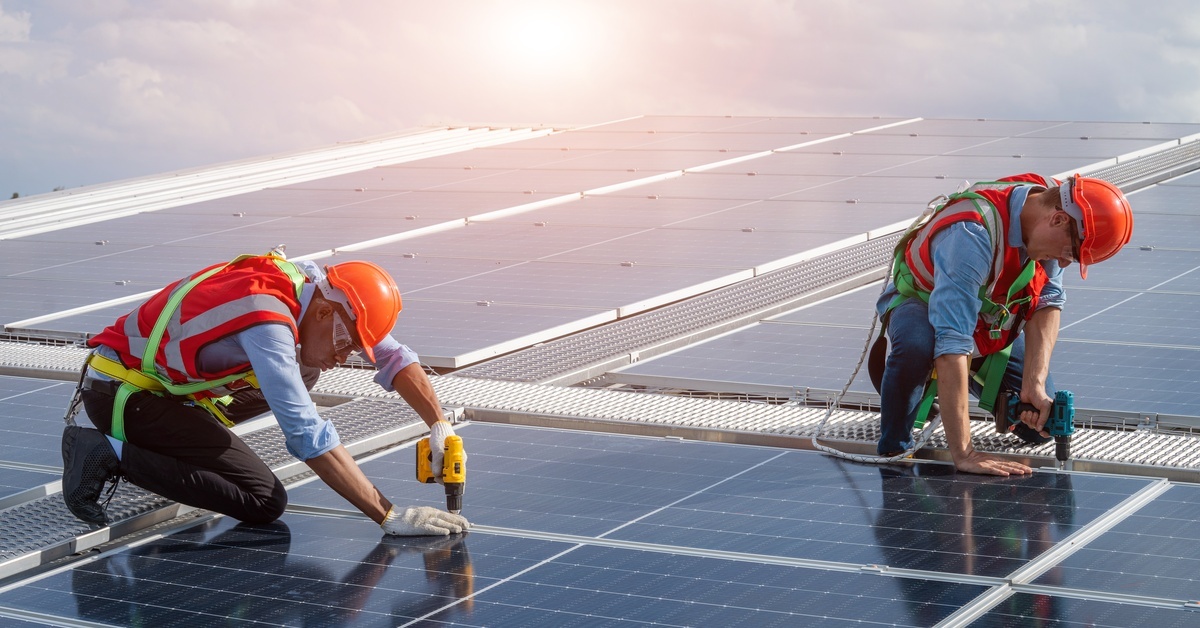Jul 23rd 2025
What a Solar System Permit Application Typically Includes
Installing a solar energy system requires more than just choosing the right panels and finding a qualified installer. One of the most critical steps in the process is obtaining the proper permits from your local authority.
Understanding what to include in a solar system permit application can streamline your installation timeline and ensure compliance with all safety regulations. The permit process is a crucial safety checkpoint to ensure your solar energy system meets all safety requirements. Follow along to learn more about the steps you must take for your solar system.
Essential Documents for Your Application
Before obtaining your permit, you must first submit documentation detailing what you want to build and its location. You will give these documents to local officials to obtain your building permit and begin the project.
Engineering Drawings and Site Plans
Your permit application must include detailed engineering drawings that demonstrate system layout, component placement, and electrical configurations. Site surveys and topographical maps, which show the terrain, are necessary for this part of the planning and presentation of documents.
Layouts are also required for inspectors to know where you will place the solar panels, along with their spacing and orientation. Inverter locations and grid connection points must also be marked on any maps.
Equipment Specifications and Certifications
Solar farm permits require comprehensive equipment documentation to prove that all components meet industry standards. This includes solar panel certifications, inverter documentation, and specifications for the mounting system. All of these parts must show the details of each component.
Solar panel certifications demonstrate compliance with various standards and ensure that your installation meets performance requirements. You should also include manufacturer datasheets that show power output, temperature coefficients, and warranty terms.
Inverter documentation should specify efficiency ratings, grid compliance features, and safety certifications. String inverters, central inverters, and power optimizers each require different documentation approaches.

Environmental and Safety Assessments
Proper environmental and safety assessments form the backbone of any successful large-scale solar farm project. To secure permits for the location, you must obtain approval from the local government, typically based on research into the impact on the area’s environment.
Environmental Impact Studies
Large-scale solar installations require thorough environmental assessments addressing potential ecosystem effects. Examining the wildlife habitat and soil impacts of the solar farm is a necessary part of this research.
Wildlife habitat analysis identifies sensitive species and migration patterns that construction or operation could affect. Mitigation strategies for protecting local fauna are often conditions of a permit.
Soil- and water-impact evaluations assess potential erosion, changes in runoff, and the effects on groundwater. Proper drainage planning and erosion control measures address regulatory concerns about environmental protection.
Safety and Emergency Response Plans
Permit applications must include comprehensive documentation addressing both construction and operational safety. Fire safety plans are integral parts of safety, detailing emergency access routes, shutdown procedures for equipment, and coordination with local fire departments.
Electrical safety protocols cover lockout/tagout procedures, arc flash protection, and maintenance safety standards. Inspectors who deal with OSHA compliance documentation often include it with these plans.
Storm- and natural disaster–response plans outline procedures for severe weather events, equipment protection, and rapid system restoration. Climate-specific hazards receive particular attention.
Regulatory Compliance Documentation
Regulatory compliance entails adhering to regional, national, and international policies, which can vary significantly across jurisdictions. Proper documentation streamlines the approval process, mitigates legal risks, and reinforces investor confidence by demonstrating a commitment to sustainable and compliant practices.
Zoning and Land Use Permits
Solar farm developments require compliance with local zoning regulations and land-use policies. This step requires the inclusion of several important documents.
Zoning compliance verification confirms that you are permitted to install solar energy systems in the proposed location. Special-use permits or conditional-use permits may be required in agricultural or residential zones.
Different jurisdictions also require that solar farms be an adequate distance from property lines, roads, or other structures, so include documentation of the setback requirement. The exact distance required varies by area, so research your local rules to ensure compliance.
Some areas have height restrictions that dictate the maximum height of a panel, inverter, or support building. This could be to preserve a scenic view or provide aviation safety. Ensure that your system meets height restriction requirements for the area.
Utility Interconnection Agreements
Grid connection requires extensive coordination with utility companies and independent system operators. This means you need documents to verify the agreements and details of the coordination.
Interconnection application forms specify the generation capacity, connection voltage, and type of protection equipment. Review processes can take several months for large installations.
Power purchase agreements or net metering contracts define how generated electricity will be sold or credited. Long-term contracts often strengthen permit applications by demonstrating project viability with the utility company.
System impact studies assess the impact of solar generation on local grid stability and power quality. These studies may require modifications to the system or upgrades to the grid to comply with local standards.
Financial and Legal Documents
Developing a large-scale solar farm requires thorough financial and legal planning to guarantee long-term project success. Working within the legal framework is also an essential part of planning a sustainable and profitable solar energy project.
Project Financing and Insurance
Permit applications are increasingly requiring financial documentation to prove that project viability and community protection are priorities for the builders.
Financing commitments from banks, investors, or equipment manufacturers demonstrate project feasibility. The government may require letters of credit or performance bonds for large installations.
Insurance coverage documentation must include general liability, property damage, and environmental liability policies. Minimum coverage amounts vary by jurisdiction but typically range from $1 million to $10 million.
Property Rights and Agreements
All involved parties must be aware of property rights during the permit process. Land ownership verifications confirm who has the legal authority to develop the proposed sites. If you lease the land, then the landlord must consent and sign the leasing agreements.
Neighbor notification documentation proves that adjacent property owners received advance notice of proposed development. Some jurisdictions require signed acknowledgments or public-hearing attendance records.

Maximizing Your Solar Investment Success
Solar farm permit applications require careful attention to the various requirements and documentation needed throughout the process. Comprehensive documentation that addresses all potential concerns positions your project for swift approval and successful development.
With safety and compliance at the forefront of acquiring a permit, you need the right solar labels for your project. Get Solar Labels offers custom solar system labels designed to meet your energy project needs. Our high-quality labels are the perfect solutions for the safety of your installation. We can provide all the labels you need, from hazard signs to yard signs. Contact us today to learn more about your solar label options.

